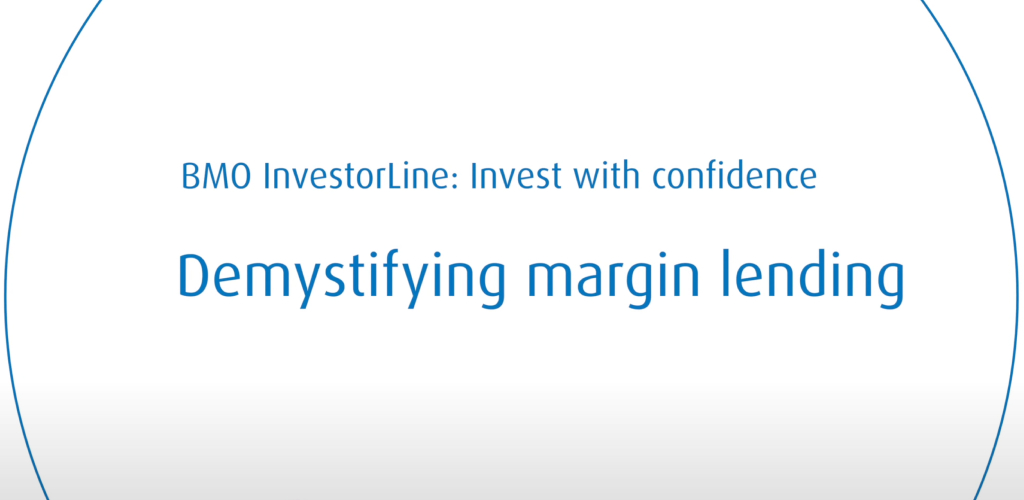Understanding Margin Trading: An Investor’s Guide
Everything you need to know about Margin Trading and its benefits.

Understanding Margin Trading
In this article we will demystify margin trading, sometimes also referred to as “trading on margin.” The simplest way to think about margin trading or investing is to think of it as borrowing money to invest.
This is also known as “leverage”. It gets this name because, like a lever in physics which allows you to amplify a force, leverage in investing can allow you to amplify the possible returns (or losses) of a trade.
What is Margin Trading?
In order to trade on margin, you need a margin account, which is like a regular trading account with one important difference: it allows investors to borrow funds (or securities) from the brokerage platform based on the securities held in the account.
Margin lending is a type of loan that can be used to purchase securities in your margin account. Essentially, this allows investors to instantly borrow money to buy more securities, which can help them increase their potential profits. However, margin loans also come with a certain level of risk as potential losses can be increased, too. It's important to understand how margin works before you decide whether or not it is right for you.
How Does Margin Trading Work?
Margin is technically the difference between the market value of the stock owned and the amount of the loan. If you are familiar with the concept of a mortgage on a home, suppose you bought a $1 million house and have a mortgage balance of $800,000.
The equity you own in the home is $200,000, or 20%. Similarly, if you owned $100,000 worth of stock, but the amount borrowed was $70,000 for that stock, then your margin is $30,000, or 30%. This is an important concept because there are limits to how much you can borrow and how much margin you need to have in your account.
Minimum requirements of Margin Trading
The amount of margin that is required to execute a margin trade varies depending on a few factors. Stocks have different margin requirements than debt instruments (like bonds).
Further, the share price of a security can affect the margin requirement as well. Your brokerage will publish a guide to margin requirements for any types of securities they offer for trading, including which securities are not eligible for margin. You can see the BMO InvestorLine Margin Rates here.
Let’s use a simple example of margin to see how margin trading works.
When we look up the margin requirement for a hypothetical stock XYZ that has a $50 share price, we see this falls into the category of needing a minimum of 30% margin. Suppose you have $30,000 of cash in your margin account.
$30,000 would be 30% of $100,000, which means you could buy $100,000 worth of stock XYZ. You would put in $30,000 of your own cash, and your brokerage would lend you $70,000 to execute the trade.
How Margin Trading Increases Potential Returns and Losses
Now let’s see what would happen if our stock XYZ either went up or down 10%. This will give us a good look at how margin amplifies potential returns or losses.
Without margin, the calculations would be simple. If we only used our $30,000 cash to buy $30,000 worth of stock XYZ and it went up 10%, our market value would be $33,000. If it went down 10%, our market value would be $27,000. So, we’d either be up or down $3,000, less the costs of executing the trades.
But for our margin trade, we would be holding $100,000 of stock XYZ to start. If that went up 10%, we would have $110,000. We would still owe $70,000 on our loan, and if we sold our position and paid off the loan we would have $40,000 left over. We would have increased our cash position from $30,000 to $40,000, which is a gain of 33.33% (this gain will be reduced by trading commissions as well as the interest on the borrowed funds).
This sounds lucrative, but consider what happens if stock XYZ went down 10%. Our $100,000 initial position is reduced to $90,000. We still owe $70,000, so if we sold our position we would be left with $20,000 after paying back the loan. We would have lost 33.33% relative to our starting $30,000 cash position, and again we would additionally have to subtract trading commissions and the interest charged for borrowing funds.

Margin Requirements and Margin Calls
With a margin account you need to ensure your “buying power” remains above zero. If you opened a new margin account with $50,000 cash deposited to your account, your buying power is easy to figure out: it’s simply $50,000. But suppose you want to buy securities that have a margin requirement of 30%.
This means your maximum opening position size could be as high as $166,500 since you could put up $50,000 cash and the brokerage is willing to extend $116,500 to borrow in order to buy more shares (a 30% margin requirement on $166,500 = $50,000). As a quick rule of thumb, securities with a margin requirement of 30% would allow you to borrow 3.33:1.
Let’s say you decide to buy $100,000 worth of a security that has a margin requirement of 30%, and not the full $166,500 your buying power affords. Your total equity position would be $100,000. And because the margin requirement on this holding is 30%, that means your margin required is $30,000. Since you had $50,000 in cash before the trade, if we subtract this margin required of $30,000, your buying power left is now $20,000.
It's important to keep an eye on your buying power. If you use a lot of margin and/or if your positions lose value, it’s possible for this number to actually become negative. If that happens you would be faced with what’s called a “margin call”. Your brokerage may ask you to deposit more cash to your account or to sell some securities to bring your buying power back out of negative territory.
Pros and Cons of Trading on Margin
It should be clear that margin trading can either magnify gains or losses. With a margin account you can also instantly access borrowed funds. As with any loan, there is interest to pay on borrowed funds and this will serve as a drag on your returns, but the rate of interest charged by brokerages is generally very low. This is because these are secured loans – the securities purchased act as collateral which reduces the risk to the lender versus unsecured loans which charge much higher rates of interest.
One of the bigger risks to be aware of is how margin calls can affect your performance when your trades are not going in the direction you had hoped. With a buy and hold approach without margin, if a stock dropped in value and you were patient, you could hold your position in the hopes of the share price regaining its value. But with a margined position, if you get hit with a margin call you may be asked to either add more cash to keep your trade open, or partially exit your trade at a potentially inopportune time in order to keep your account’s buying power above zero.
To reduce the risk of margin calls you could consider the following strategies:
- Using margin with a diversified portfolio is generally going to be less risky than using margin with individual security positions.
- You don’t need to borrow the maximum amount allowed. Keeping a healthy buffer in your buying power available not only reduces the risk of margin calls, it could allow you to be opportunistic in response to a market downturn.
- You could learn about risk mitigation strategies such as stop loss and trailing stop loss orders that you could use in tandem with margin to limit losses or lock in gains.
Examples of Using Margin
For the right investors and situations, borrowing to invest could allow you to be more flexible with your cash flow management. For example, suppose you had a personal expense and were considering selling some stock to fund the expense. You could borrow against those securities instead.
Alternatively, if you normally get a year-end bonus but the market has a correction at the beginning of the year, you could use margin to try and capitalize on the possible opportunity and cover your loan when you get your bonus. And of course, some people may employ leverage simply because the cost of borrowing is expected to be lower than the rate of return on the borrowed securities.
Other Features of Margin Accounts: Short Selling and Options Trading
A margin account is also the only account that can allow you to directly short sell a security, which means you sell a stock first in the hopes of buying it later at a lower price to close the transaction. This allows you to make money when a stock falls in value. You are effectively trying to buy low, and sell high, but in reverse: you hopefully sell high first, and then buy low later. This requires borrowing the stock from the brokerage.
Concluding Thoughts
Trading on margin is generally not advisable for beginner investors. Even many experienced investors forego using margin or other types of leverage with their investments. Margin and margin accounts are in no way required tools to be a successful investor.
However, if you have a very high-risk tolerance and capacity to stomach losses, and have taken the time to learn more than just the basics of investing, you might be curious if margin is right for you. If you do fall into this category, hopefully now you have a better appreciation of not just the potential performance increase margin offers, but also the downside considerations as well.
To learn more about margin accounts and margin investing, you can visit the BMO InvestorLine learning centre and watch the free course for advanced investing strategies which includes some visual examples of margin and margin trades.
Ready to start investing?
Start investing online with BMO InvestorLine Self-Directed or BMO adviceDirect.
Related articles
Have questions?
The opinions and views expressed in this video are those of the presenter and not necessarily BMO InvestorLine Inc. This video is prepared as a general source of information and is not intended to provide legal, investment, accounting or tax advice, and should not be relied upon in that regard. If legal or investment advice or other professional assistance is needed, the services of a competent professional should be obtained. Any information contained in this presentation does not constitute and shall not be deemed to constitute advice, an offer to sell/ purchase or as an invitation or solicitation to do so for any entity. The content of this presentation is based on sources believed to be reliable, but its accuracy cannot be guaranteed. BMO InvestorLine Inc. and its affiliates, sponsors and employees do not accept responsibility for the content and makes no representation as to the accuracy, completeness or reliability of the content and hereby disclaims any liability with regards to the same.
An adviceDirect account is a non-discretionary, fee based account which offers investment recommendations. adviceDirect does not provide portfolio management by a portfolio manager. The client makes their own investment decisions and manages their own investment portfolio. adviceDirect does not offer discretionary, managed accounts.
Smartfolio is a product of BMO Nesbitt Burns.
BMO InvestorLine Inc. is a member of BMO Financial Group. ®Registered trade-mark of Bank of Montreal, used under licence. BMO InvestorLine Inc. is a wholly owned subsidiary of Bank of Montreal. Member - Canadian Investor Protection Fund and Member of the Investment Industry Regulatory Organization of Canada.

